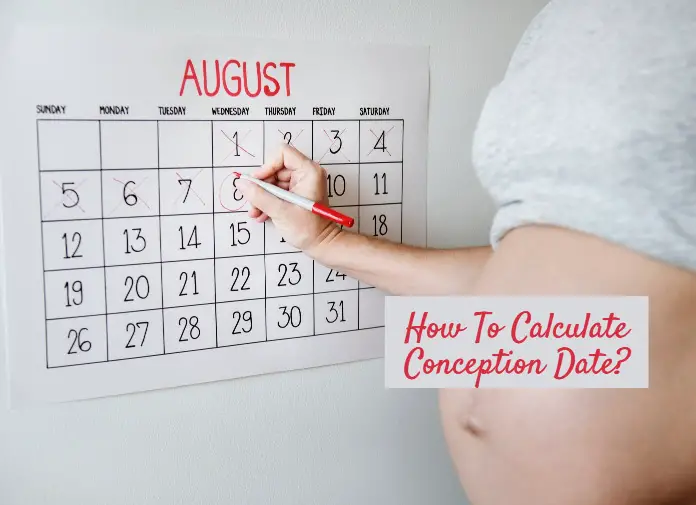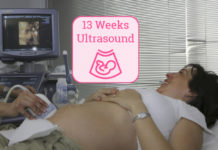A conception calculator estimates the day you had sex which led to pregnancy and also due date of arrival of your baby.
In case a woman had sex with multiple partners she can find out the father of the child. You have to add 266 days to the first day of the last menstrual period.
Doctors calculate pregnancy by taking two weeks extra including the ones before ovulation. Usually, women take a pregnancy test when their period is late. But conception occurs two weeks before period.

How do doctors calculate gestational age?
They estimate the gestational age by adding two weeks starting from the first day of last period. A retro-conception calculator can tell you about your birth. You can use it to find out when your mother conceived by entering your birth date.
The conception date is mostly the ovulation day or next. The egg can remain viable only for 24 hours.
When did I conceive and how many weeks am I?
The conception calculator takes two inputs of information. It needs the length of your menstrual cycle and the first day of last period. Usually, pregnancy lasts for 36-40 weeks, and the calculator adds the number of days.
When did I conceive?
Conception occurs within 24 hours after ovulation. So the date of conception is the ovulation day of the previous cycle. It will always be an estimate. No one can tell you the exact time of conception. Certain factors release in blood after fertilization occurs. Advanced blood tests within a short time frame after fertilization can tell when did conception occur.
Conception date calculator will also help in preparing for two due dates. However, even after calculating gestational age doctor assesses it at every stage. After the first ultrasound, your doctor will refer to the conception calendar. But she will estimate the due date based on ultrasound and rely on it.
How do you calculate your due date?
The date of conception is an assumption based on the fact that ovulation occurs 11-14 days after the first day of last period. A due date calculator IVF tells the more exact date of conception. It is because fertility experts know the time of embryo transfer.
If you want to calculate the exact date of conception, then you need to add two weeks extra. A gestational age calculator will make the work easy for you. When you calculate conception date, you need to consider the usual length of your cycle. If you have a shorter period then you need to subtract those many days.
A longer cycle implies that you have to add extra days to calculate the date.
You can also calculate the date of conception from the day of having sex. Other methods for determining conception date include the early ultrasounds. The ultrasounds between 8-18 weeks can help calculate the baby’s age. When the baby is only two weeks old, it has a gestational age of 4 weeks.
Ultrasound to calculate conception date
The crown to rump ratio is the measure of the growth of the baby. Doctors use ultrasound during pregnancy to measure the length of the embryo. If the baby is too small for the present stage of pregnancy, then it can be a blighted ovum. The baby must keep growing according to the conception date.
How accurate is a conception calculator?
A conception calculator is fairly accurate for women with regular cycles. Those who have irregular period cannot figure out the length of the cycle. Some women may forget her last menstrual period date and make a mistake.
Ultrasound dating can contradict the conception date because of slow development.
How to use a conception calculator?
You don’t have to do much for using a conception calculator. All you have to do it type the length of the menstrual cycle and the first day of last period. When you will input this information, the calculator will generate the answer. If you want to calculate your gestational age, then add two weeks to the answer.
Special cases of having longer or shower cycles require extra steps. But that is why you calculate the date manually. Once you use an online conception calculator, it won’t matter.
How does conception calculator work?
A conception calculator considers the fact that a pregnancy lasts for 40 weeks. It does consider the personal aspects by incorporating the length of the menstrual cycle in its calculations.
However, only about 5 in 100 births are on the due date. Rest all are either earlier or later. The wheel conception calculator at gynecologist clinic is the non-digital version. When you use the information from ultrasound scans along with conception calculator, the results are accurate.
The date of conception is an assumption but the ultrasound shows the growth of the baby. So, dating scans are more reliable than the conception calculator. But once the baby crosses the 18th week, it is difficult to figure out due date using ultrasound. The crown to rump ratio is only good for the fetus.
You can even use an ovulation calculator to find out the date of conception. Ovulation after the first day of last period before you conceived will be used to calculate. Most women ovulate between the 11th to 14th day after the first day of the period. Conception can occur practically only within 24 hours after ovulation. So the date of ovulation will also be conception date.
The reason for taking the first day of last period and not the last day is the length of the luteal phase. Some calculators require you to input information about the luteal phase too. When the egg is out of the ovary, the follicle secretes progesterone. This stage is the luteal phase. When a woman has a longer cycle, her luteal phase remains constant. However, her ovulation date shifts ahead of the 14th day. So her conception date will also be later.
Irregular period or forgetting the date of your period can make the conception calculator dicy. There are other methods for determining the day of ovulation and conception. The pros of the conception calculator are its ease of use and accessibility.









